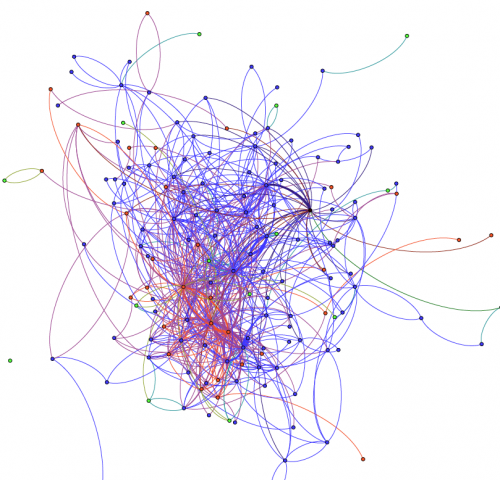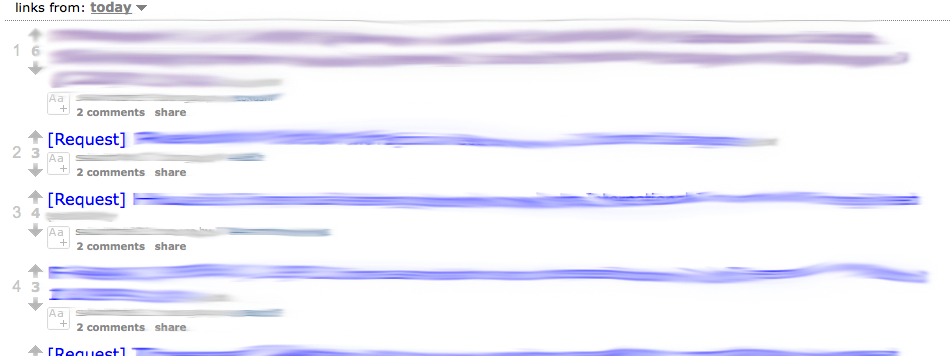As part of my research on digital scholarship and the experiences/practices of scholars in online networks, I am working with the Texas Advanced Computing Center and the newly-established Visualization Lab at the College of Education to understand learner and scholar participation patterns on the social web. Below is our first visualization, which shows interactions between three types of users who are contributing to a hashtag (red, blue, green). It’s a directed graph, with nodes representing users, and edges representing interactions between users. The thickness of the edge represents # of interactions (thick = more interactions). When nodes of a different color interact with each other, the edges take the color of the two node (e.g., when a blue node interacts with a red node, the edge is purple). What does this visualization tell us? 
We are still trying to make sense of this, and we are slowly learning from the tutorials that Tony Hirst has created. This is what (i think) this says: First of all, we know that the majority of the people contributing to this hashtag are not having a conversation with each other (#nodes making up the dataset are 3 times the group shown above – this is not shown on the graph). Second, it looks likes there’s a few “central” folk through which conversations occur. Finally, even though interactions happen between red and blue nodes, it looks like the majority of the interaction is happening within those two groups. And that’s important in this situation because one of our hypothesis was that the red group was joining this community to interact with the blue group (if that was the case, we would be seeing more purple in the image above). We definitely need additional ways to evaluate some of these statements, but that’s what it “looks like” from the image above. And here’s where I think data visualizations start becoming really valuable: You can quickly see patterns and ask questions, and continue from there. We have some ideas and hypotheses, but we also want to let the data bring up phenomena that we haven’t thought about. I don’t yet feel confident that I fully understand what I am seeing here, but I am quickly learning a lot! So my question to you is: how would you interpret this? What questions do you have of what you are seeing here?


